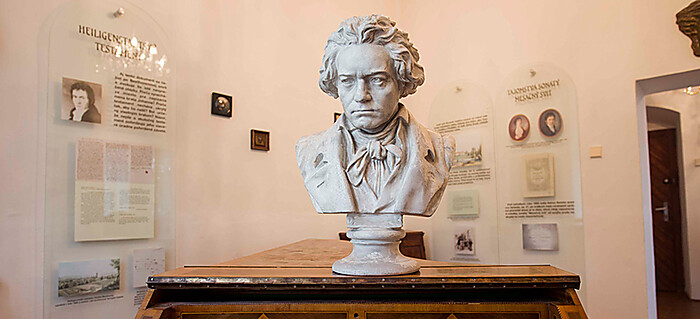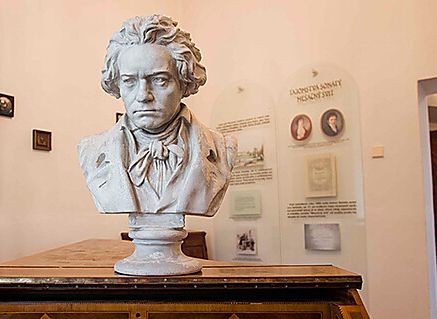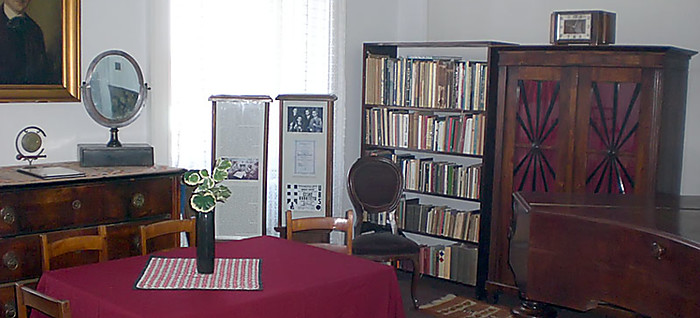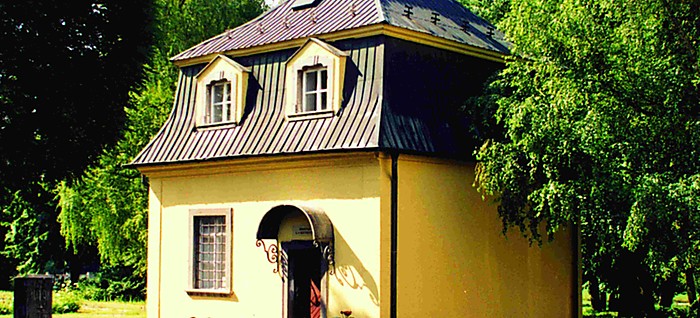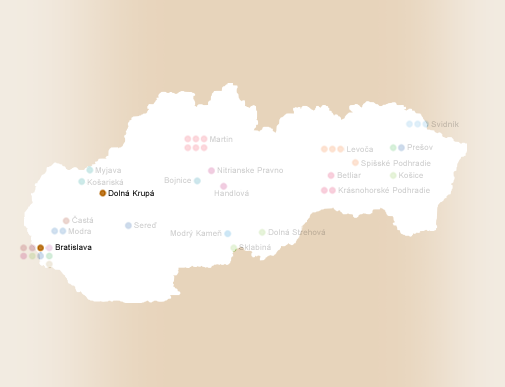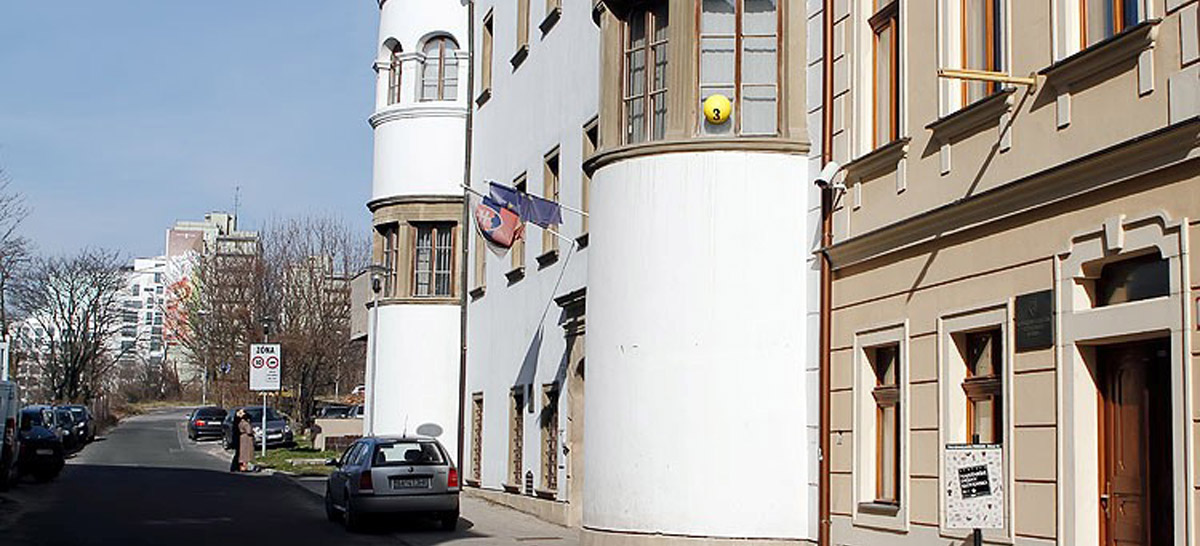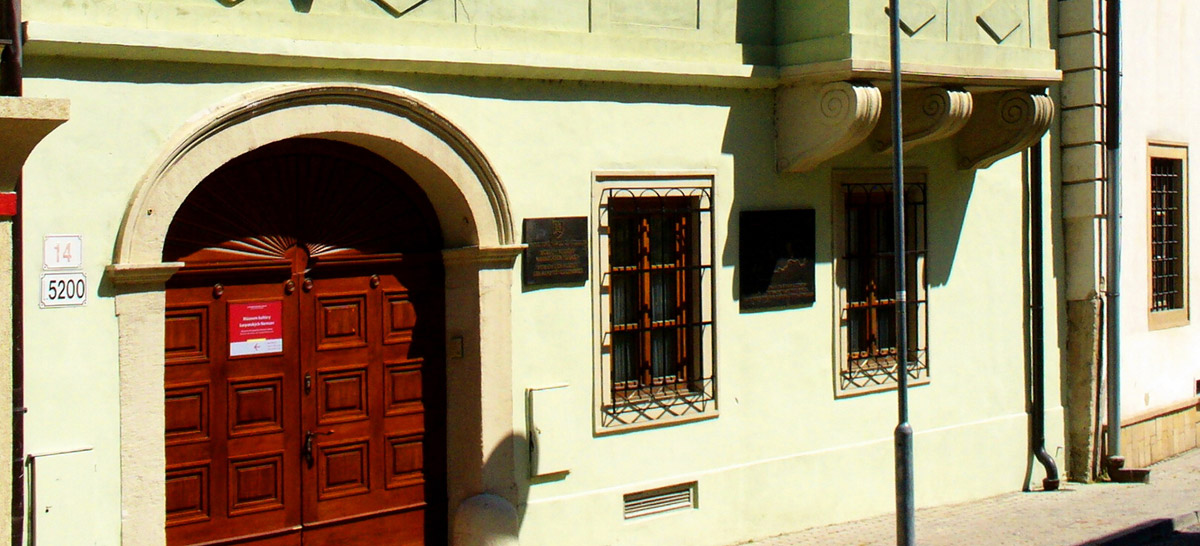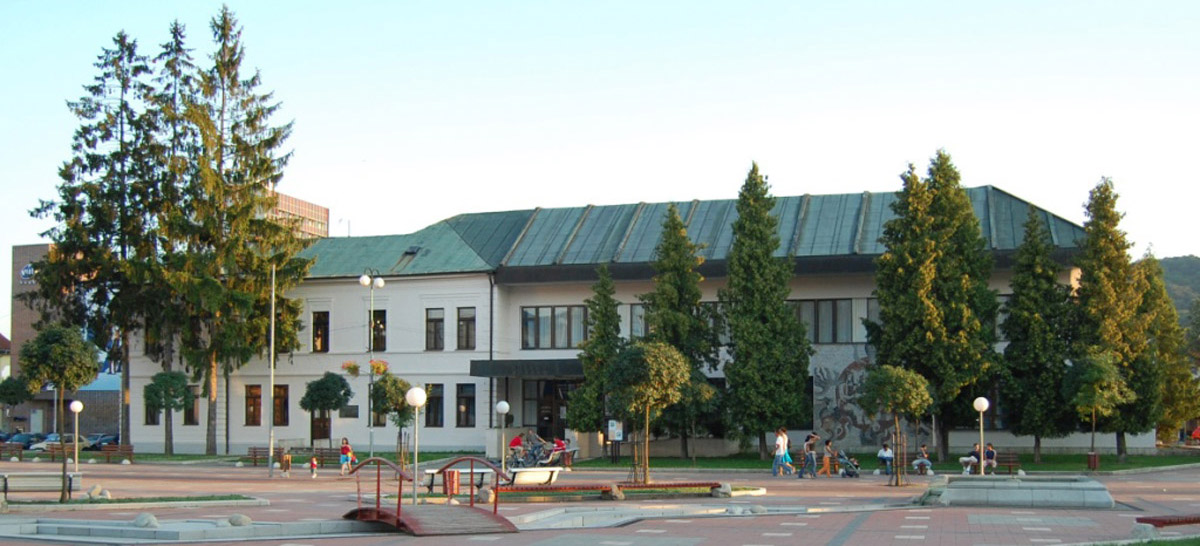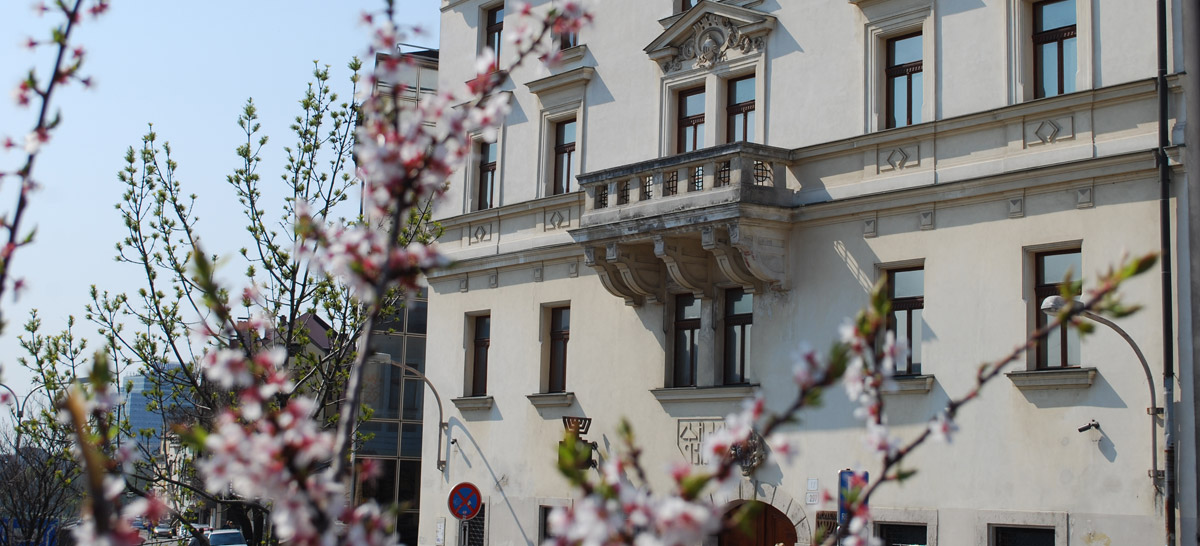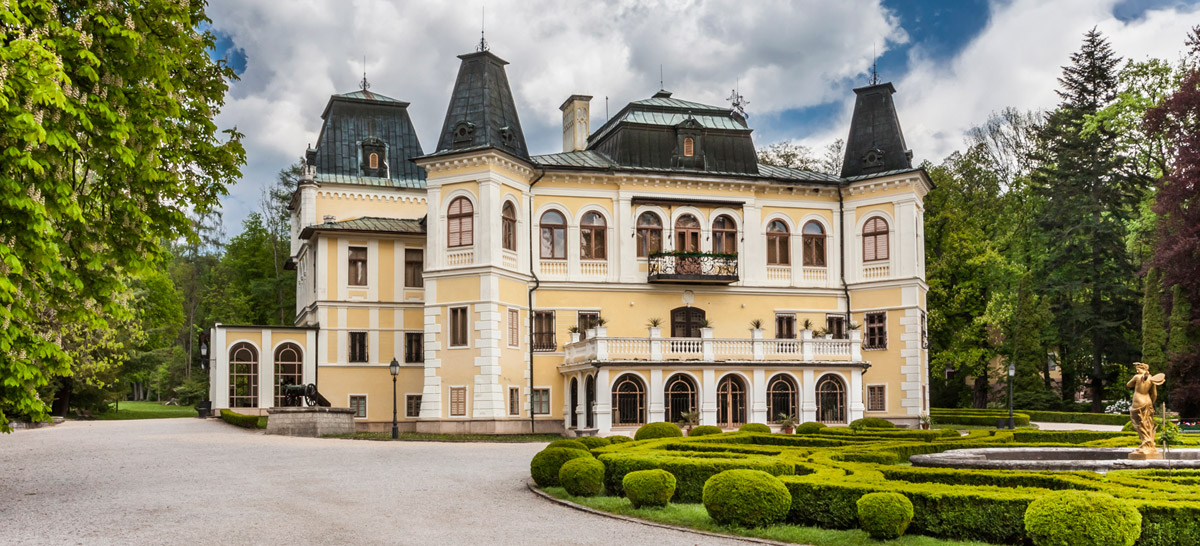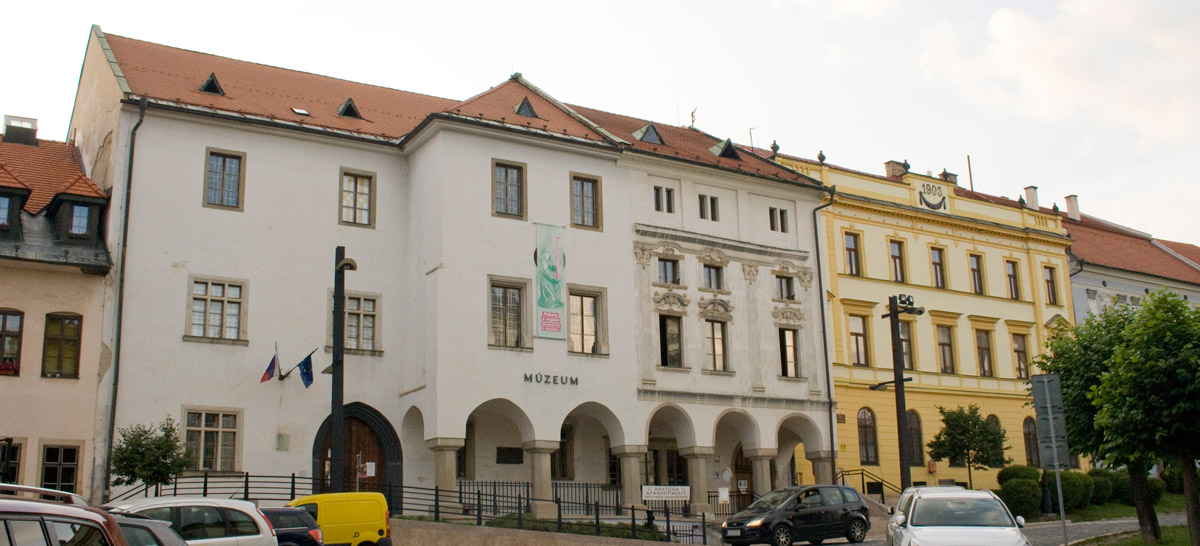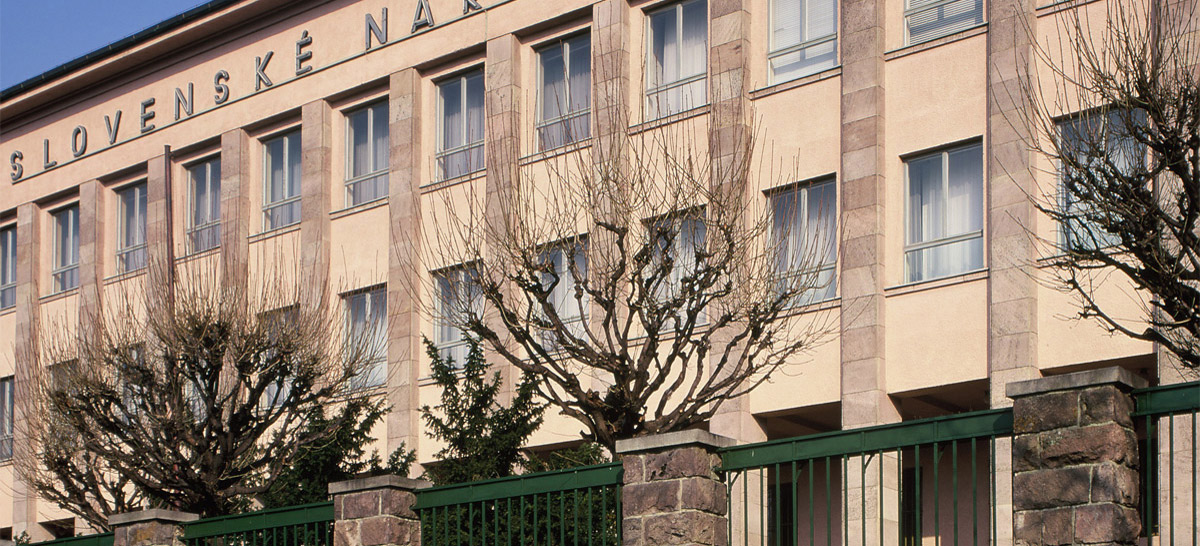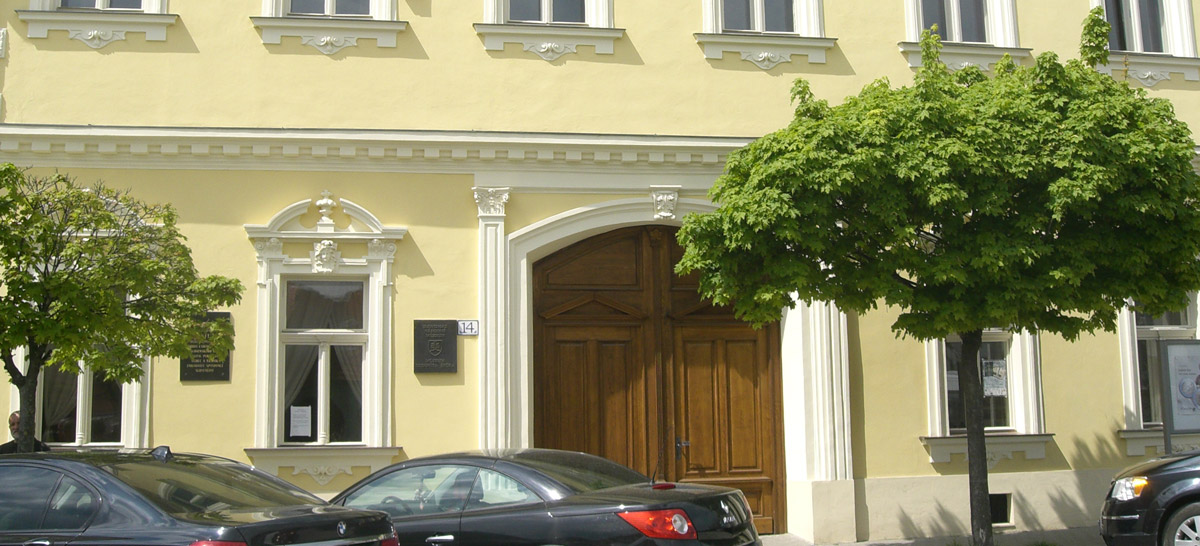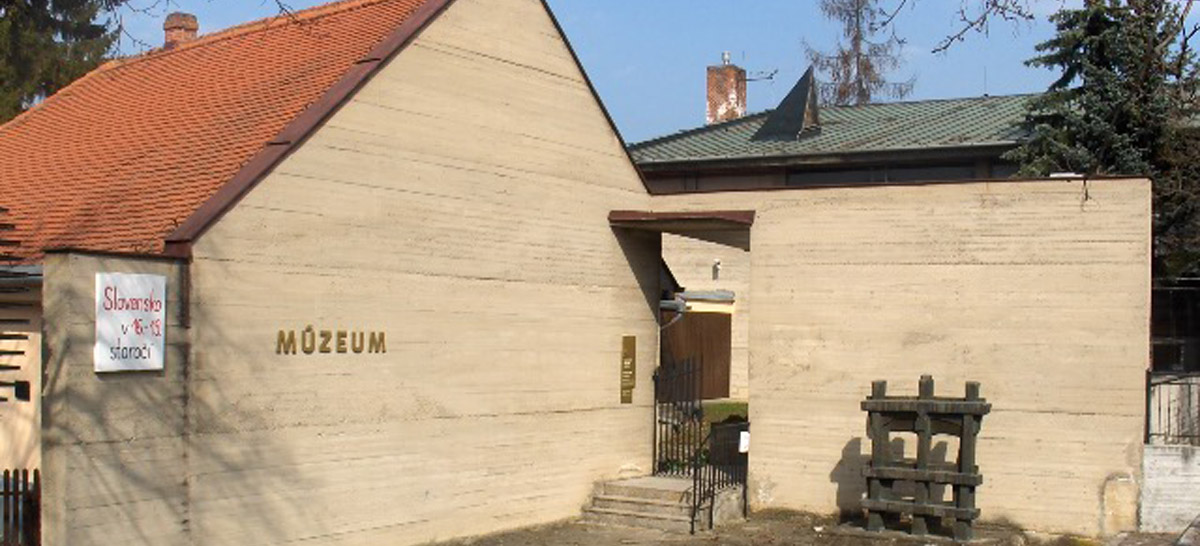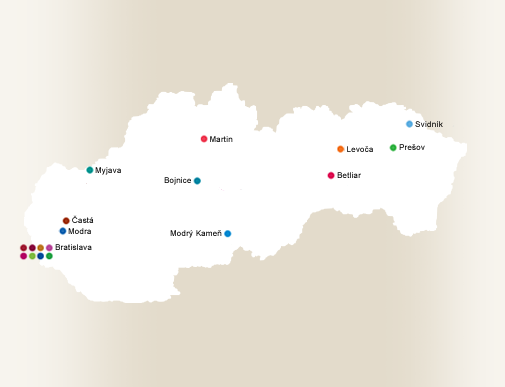About the museum
Mission and History
Mission
The Museum of Music is one of the few specialized museums in Slovakia and in Europe dedicated to the comprehensive archive documentation of the history of music and musical instruments
History
Dolná Krupá Manor House
The construction of this manor house is connected with the Brunsvik family, whose landholding in Hlohovec, a town in present-day Slovakia, dates back to the 16th century. Michal II Brunsvik (1671 – 1719) became the owner of the estate in Dolná Krupá by marrying Maria Teresa Vitális. Their son Anton studied law at Trnava University From 1749 to 1756 and built a manor house on the site of the older structure based on a Baroque design created by imperial court builder Johann Baptist Martinelli Sr. In 1775, Empress Maria Theresa conferred the title of count to Anton I Brunsvik with the right to use the words de Korompa (of Krupá) in the title.
Anton I gave his estate in Mártonvásár (present-day Hungary) to first-born son, Anton II Brunsvik, and his younger son, Joseph Brunsvik (1750 – 1827) took over the estate in Dolná Krupá after his father’s death in 1780. Joseph reconstructed the manor house from 1792 to 1796 based on the plans of Johann Josef Talherr, architect and chief of the Hungarian Chamber of Construction. Other structures which were gradually added to the Baroque-Classicistic building included a theatre, gardener’s house, orangery, spa house and gazebos.
In 1813, Joseph decided to reconstruct the manor house in modern Classicistic style under the direction of 24-year-old architect Anton Pio Rigel of Rome. Work on smaller structures took place from 1813 to 1819 and was followed by the creation of an English park with an area exceeding 100 hectares, based on the design of garden architect Christian Henrich Nebbien (1788 – 1841). Reconstruction was completed in 1822. The plan of the manor house and park with inserted caption is also from this year.
The manor house is one of the most beautiful examples of rural Classicistic architecture in Slovakia. Thanks to the Brunsvik family, it gained fame at home and abroad due to the natural beauty of the park and the collections of art (in particular, paintings), books and minerals, while performances were held in the theatre building (which existed until 1937) with the active participation of the owners. Count Joseph’s wife, Maria Anna, nee Majtényi, wanted to present a melodrama and Ludwig van Beethoven was expected to compose music for it. According to oral tradition, Dolná Krupá was the place where Beethoven composed his most famous piano opus – Moonlight Sonata. Members of the later owners of the manor house, (the Chotek family) were acknowledged for their success in agriculture and livestock farming. Marie Henrietta Chotek (1863 – 1946), today known as “the countess of roses” made the estate famous in the late 19th and early 20th century due to her rosarium which was comprised of 6,000 rosebushes along with her later acquisition of the complete collection of the rose cultivars inherited from famous rosarian Rudolf Geschwind.
Park
The SNM – Music Museum also manages the historical park with an area of 17 hectares. Only a torso of the original English park with the ingenious water system of the Tortoise, Trout and Big ponds has been preserved. The Big Pond and Luisa’s Island, named in memory of the premature death of Count Joseph Brunsvik’s daughter, was recently renovated. The park also features an artificial cave, known as the Grotta. Some of the preserved architectural elements from the middle of the 19th century include the obelisk which was raised by widow Maria Anna Brunsvik (nee Majtényi) in memory of her husband, and Istvan Ferenczy’s Mother and Child statue. The sculpture created by Rudolf Cauer Sr. was damaged during the insensitive reconstruction of the park in the 1980s. The protected giant sequoia tree, which has a trunk perimeter of over 5 meters and a height of 45 meters, is from the second half of the 19th century, and was awarded second place in the 2008 “Tree of the Year” competition. The park is open to the general public during the summer season from 8:00 a.m. to 8:00 p.m. and in winter season from 8:00 a.m. to 6:00 p.m.
Briefly from the history of the manor house
- 1813: the Chotek family comes to Krupá thanks to the marriage of Henrietta Brunsvik and Herman Chotek.
- 1945: the Pallaviccini family, the last owners of the manor house, leave Slovakia, which leads to looting by local residents.
- 1946: an institution for the treatment of tuberculosis and later for the mentally ill are established in the nationalized manor house.
- 1946: Marie Henrietta Chotek – the last countess, dies in the nearby Jozefinum monastery.
- 1947: following the land reform, the estate is divided, with the park and its current area of 17 hectares remaining in state ownership, and many significant structures, such as the library, farm buildings being demolished.
- 1958: representatives of music and cultural life sign a memorandum in support of the efforts of Juraj Šimek-Juhás to establish a music museum in Dolná Krupá.
- 1969: the manor house is allocated for music purposes and is assigned to the administration of the Slovak National Museum, a decision to renovate it is passed later.
- 1978: thanks to Eugen Suchoň, the House of Slovak Composers is opened at the manor house after the reconstruction which was funded by the Union of Slovak Composers.
- After 1980: the park is renovated, however the renovation ignored the original historical layout. Smaller structures are assigned to the administration of the Institute of History of the SNM and the original orangery is rebuilt and becomes a depository of musical instruments.
- Renovation is not completed after 1990 due to a lack of funding and the manor house is assigned to the administration of the Cultural Facilities of the Ministry of Culture of the SR. The Ludwig van Beethoven Memorial is established in the reconstructed Rococo pavilion (former gardener’s house).
- 2000: the manor house is returned to administration of the SNM.
- 2003: the premises of the manor house are assigned to the administration of the SNM – Music Museum.
- Many significant figures visited the manor house in course of the 20th century, including Johann Pálffy, owner of Bojnice Castle, Austrian painter Oskar Kokoschka, winner of the Nobel Prize for literature Romain Roland, who collected material for his book on Ludwig van Beethoven at Dolná Krupá, photographer and ethnologist Karel Plicka and others. When the manor house was home to the House of Slovak Composers, it was visited by number of respected domestic and foreign guests in addition to its regular visitors.

